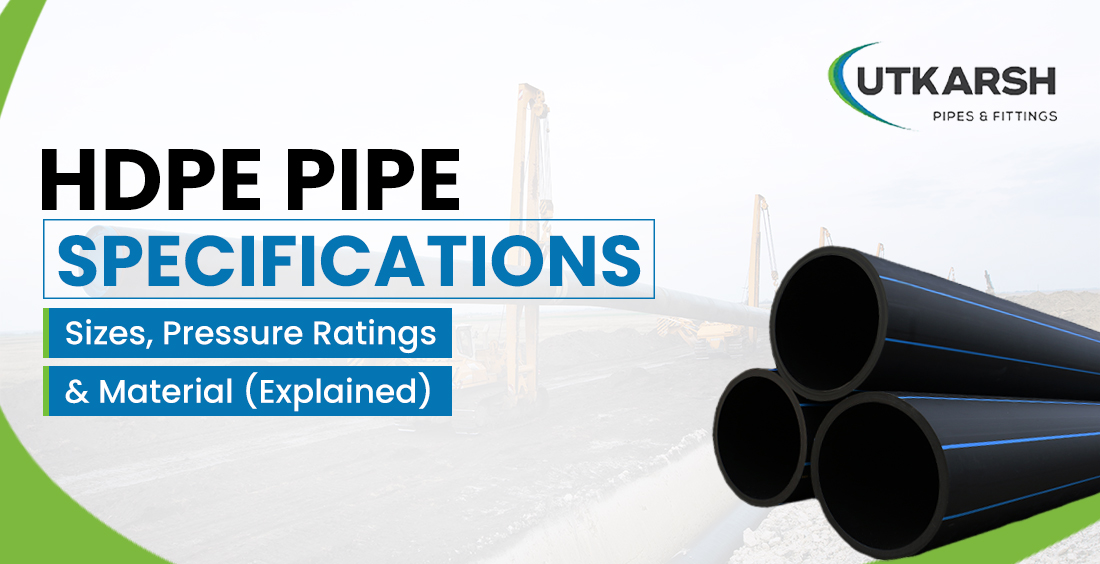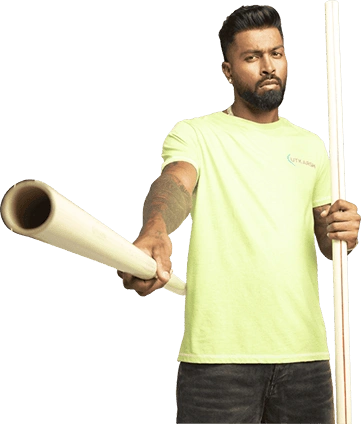HDPE Pipe Specifications: Sizes, Pressure Ratings & Material (Explained)

If you’re working on a big project—whether municipal, industrial, or agricultural—you’ve probably asked yourself: What is HDPE pipe? And why is it the go-to solution across industries? HDPE pipes & fittings are everywhere these days, from irrigation systems to wastewater lines, thanks to their unbeatable combination of durability, flexibility, and cost-effectiveness.
In this blog, we’re breaking down what is HDPE pipe specifications, sizes, pressure ratings, and material composition are in simple, actionable terms. We’ll also show you how to select the right HDPE pipes & fittings for your project and why these pipes are such a game-changer. Let's get straight into it!
What is HDPE Pipe?
HDPE stands for High-Density Polyethylene, a thermoplastic material known for its high strength-to-density ratio. So, what is HDPE pipe? It’s a pipe made from this durable plastic, designed to handle a variety of fluids under different conditions without corroding, rusting, or cracking.
HDPE pipes & fittings are used in everything from water supply systems and sewage to chemical transportation and mining. Their flexibility, long lifespan, and resistance to extreme conditions make them the first choice across sectors.
Know more: What are the environmental benefits of using HDPE pipes?
Key HDPE Pipe Specifications You Should Know
Let’s dive deep into what is HDPE pipe specifications so you can make better, informed decisions:1. Available Sizes and Diameters
Actionable Tip: For small irrigation or plumbing projects, pipes in the 20 mm to 110 mm range are ideal. For municipal water supply or industrial pipelines, opt for larger diameters (above 250 mm) to allow higher flow rates.
2. Pressure Ratings (PN Ratings)
Pressure ratings indicate how much internal pressure a pipe can handle. HDPE pipes are usually categorized under:Actionable Tip: Before selecting HDPE pipes & fittings, always calculate the maximum pressure your system will face. It ensures safety, reduces wear and tear, and prolongs the life of the pipe.
3. Material Grade: PE 63, PE 80 & PE 100
Material grade affects the strength and durability of the pipe:
Actionable Tip: Opt for PE 100 material grade if you’re working on heavy-duty infrastructure or projects exposed to tough environmental conditions.
4. Temperature Resistance
HDPE pipes can function effectively in a wide temperature range:
This feature makes HDPE pipes ideal for both hot and cold climates.
Advantages of HDPE Pipes & Fittings
Why are HDPE pipes & fittings preferred over conventional pipes like steel, concrete, or PVC?
Actionable Tip: To save long-term maintenance costs, always invest in HDPE pipes & fittings, especially for underground or remote projects where frequent repairs can be costly.
Check this out: Comparing HDPE Pipes with Steel and Concrete Pipes for Industrial Use
Quick Guide: How to Choose the Right HDPE Pipe
Here’s a simple checklist you can follow:
Where to Source High-Quality HDPE Pipes & Fittings?
At this point, if you’re wondering where to get reliable HDPE pipes & fittings, Utkarsh Pipes & Fittings is a name you can trust. Utkarsh ranks among the top PVC HDPE pipe manufacturers in India. Designed as an efficient and cost-effective solution, their piping systems cater to a wide range of projects—whether it’s municipal, irrigation, treatment plants, mining, or industrial.
Their HDPE pipes are renowned for:
What’s more, we manufacture pipes that meet stringent quality standards, making them ideal for ground, surface, buried, and floating installations. Be it municipal or industrial infrastructure projects, we are your most trusted partner.
Conclusion
So, to wrap it up: What is HDPE pipe? It’s a versatile, durable, and cost-effective piping solution that works wonders across industries. Knowing what is HDPE pipe specifications, sizes, and pressure ratings can help you choose the right system for your specific needs. HDPE pipes & fittings offer unmatched performance, corrosion resistance, and long service life—all at a reasonable price.
FAQs:
What is the pressure rating of HDPE pipes?
The pressure rating of HDPE pipes typically ranges from PN 4 to PN 16, indicating their ability to handle 4 to 16 bar of internal pressure.
What is the pressure testing standard for HDPE pipe?
The pressure testing standard for HDPE pipe typically follows ISO 4427 and ASTM F2164, requiring hydrostatic pressure testing at 1.5 times the operating pressure for a specified duration to ensure pipe integrity and leak-free performance.
What is the strength of the HDPE pipe?
The strength of HDPE pipe lies in its high tensile strength and flexibility, typically ranging from 20 MPa to 37 MPa, making it durable and resistant to pressure, impact, and environmental stress.











